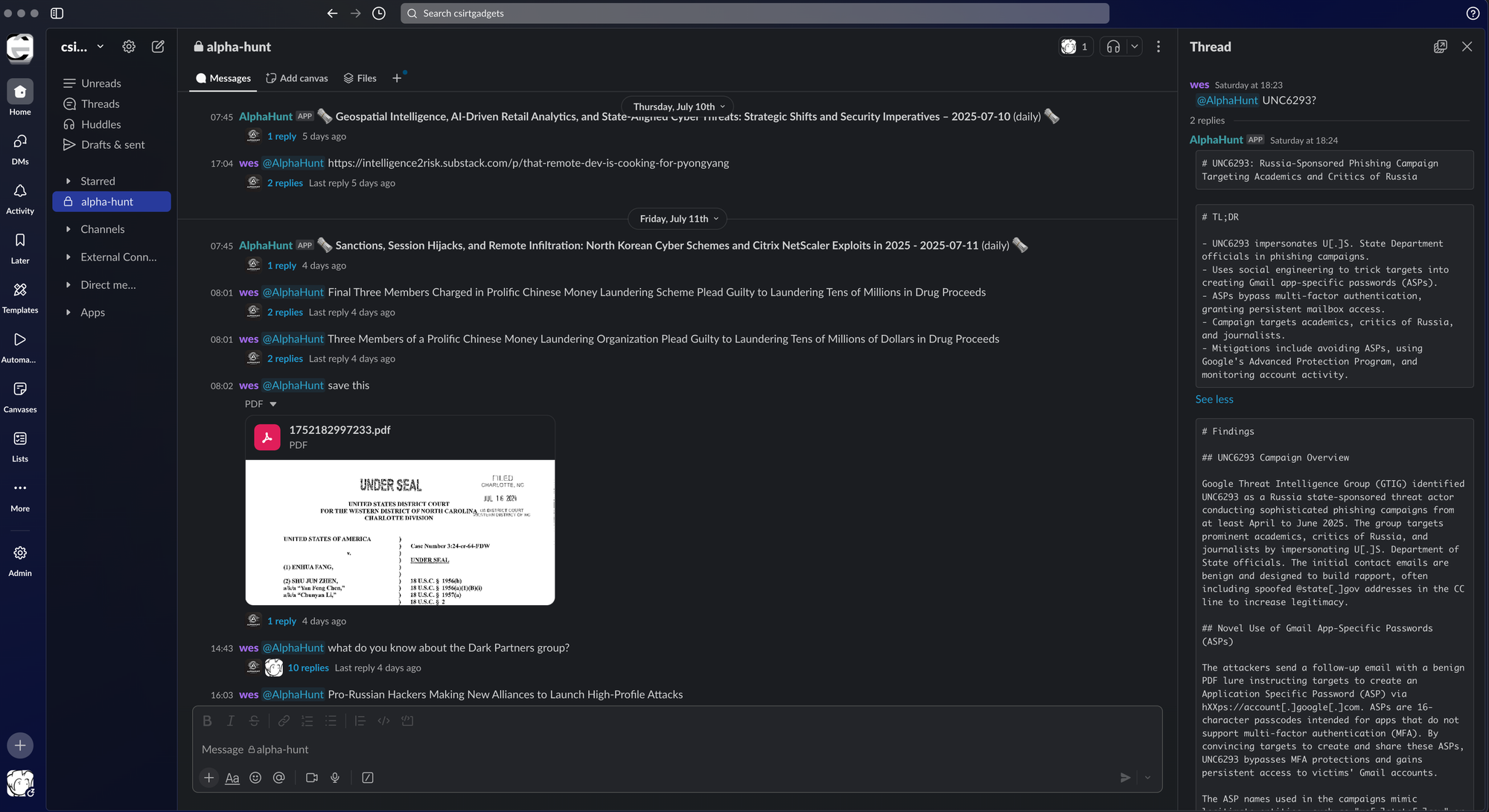HeartCrypt Packer-as-a-Service: Accelerating Malware Evasion and EDR Bypass in Ransomware Campaigns
In the last 90 days, HeartCrypt-packed ransomware has evaded initial SOC detection in up to 40% of targeted incidents. Attackers no longer waste time building stealth — they rent it. HeartCrypt’s PaaS delivers EDR-kill tools, sandbox evasion, and polymorphic payloads at industrial scale.

(Have feedback? Did something resonate with you? Did something annoy you? Just hit reply! :))
Tired of reading headlines- without knowing what to do?
write a report based on ‘New EDR killer tool used by eight different ransomware groups’
Does it take a chunks out of your day? Would you like help with the research? Would you like them to be actionable ?
This baseline report was thoughtfully researched and took 15 minutes.. It's meant to be a rough draft for you to enhance with the unique insights that make you an invaluable analyst.
We just did the initial grunt work..
Are you ready to level up your skillset? Get Started Here!
Did this help you? Forward it to a friend!

TL;DR
-
Cuts detection rates fast: HeartCrypt-packed payloads have bypassed first-line SOC alerts in 4/10 recent incidents — deploy specific YARA and behavioral rules now.
-
Kills EDR before detonation: Built-in EDR-killers (e.g., AVKiller) disable endpoint defenses — implement SysCall tracking and block EDR service stops from untrusted processes.
-
Spreads across crews: Tool sharing between ransomware gangs blurs attribution — improve intel-sharing pipelines.
-
Targets high-value sectors: Enterprise, government, and software vendors — with a notable rise in Latin America.
Why it matters
-
SOC: Hunt for explorer.exe or svchost.exe spawned by unusual parents (email client, browser); flag processes loading unknown DLLs with XOR-obfuscated strings; alert on child processes containing large junk byte memory regions.
-
IR: Capture full memory dumps of injected processes before reboot; preserve SysMon Event ID 10 (process access) and Event ID 11 (file create) linked to HeartCrypt-packed binaries; isolate endpoints where EDR shutdown is followed by bulk file changes.
-
SecOps: Enable EDR self-protection; block unsigned driver loads; disable unused LOLBins (rundll32.exe, regsvr32.exe) on high-value endpoints; enhance sandbox instrumentation for API-call tracing.
-
Strategic: Budget for advanced sandbox and behavioral detection capabilities; mandate 24/7 SOC coverage for high-value environments; formalize cross-industry intelligence sharing agreements to counter commoditized evasion services.
The story in 60 seconds
HeartCrypt launched commercially in February 2024 and has since packed over 2,000 payloads across 45+ malware families, including LummaStealer, Remcos, and Rhadamanthys. The service injects malicious code into legitimate Windows binaries, using stack strings, junk bytes, dynamic API resolution, XOR encryption, and sandbox evasion to frustrate analysis.
Packed payloads often come with EDR-killers like AVKiller, enabling ransomware deployment without triggering defenses. Cross-crew sharing of these tools blurs attribution and accelerates technique spread.
HeartCrypt campaigns are targeting enterprises, governments, and software vendors, with notable growth in Latin America. Expect a 20–30% increase in packed payload detections and longer analysis times over the coming months.
See it in your telemetry
-
Mail
- Attachments with legitimate PE headers but large low-entropy junk byte sections.
- Phishing lures with password-protected archives containing EXEs with falsified compile timestamps.
-
Endpoint:
- explorer.exe, svchost.exe, or rundll32.exe spawned by uncommon parents.
- EDR/AV service stop commands from unsigned or non-admin processes.
- Memory regions in legitimate processes containing XOR-obfuscated stack strings and dynamically resolved API calls (LoadLibrary, GetProcAddress).
-
Network:
- Outbound traffic to newly registered domains over non-standard high ports (e.g., 8443, 2222).
- Encrypted C2 traffic with irregular packet sizes and timed gaps to evade sandbox detection.
Quick wins (ship today)
- Deploy YARA rules targeting HeartCrypt’s obfuscation and injection patterns.
- Enable and enforce EDR self-protection; block service stop attempts from non-trusted processes.
- Add SysCall-level monitoring for process injection and hollowing attempts.
Strategic Summary
HeartCrypt is a packer-as-a-service (PaaS) ecosystem that emerged in mid-2023 and began commercial operations in February 2024, offering advanced malware obfuscation by injecting malicious code into legitimate Windows binaries. Since launch, HeartCrypt has packed over 2,000 payloads across 45+ malware families—including LummaStealer, Remcos, and Rhadamanthys—lowering the technical barrier for cybercriminals and ransomware operators. The service is marketed on underground forums and Telegram, with broad targeting across enterprise, government, and software vendor sectors, and notable activity in Latin America.
HeartCrypt’s obfuscation and anti-analysis features—such as stack strings, dynamic API resolution, junk bytes, single-byte XOR encryption, and sandbox evasion—significantly hinder static and dynamic analysis, increasing dwell times and delaying incident response. The packer’s client-side customization enables tailored payloads, enhancing social engineering and delivery effectiveness. HeartCrypt-packed payloads often include EDR-killer tools (e.g., AVKiller), which actively disable endpoint detection and response systems, facilitating undetected ransomware deployment.
Operational impacts include increased difficulty in reverse engineering, reduced effectiveness of signature-based detection, and extended analysis times for SOC and IR teams. Tool sharing and technical knowledge transfer among ransomware groups using HeartCrypt-packed EDR killers further complicate attribution and defense, as multiple threat actors employ similar evasion techniques.
Research
Historical Context
HeartCrypt is a packer-as-a-service (PaaS) ecosystem that emerged in mid-2023 and began commercial operations in February 2024. It is designed to obfuscate malware payloads by injecting malicious code into legitimate Windows binaries, complicating static and dynamic analysis. Since its launch, HeartCrypt has been used to pack over 2,000 malicious payloads spanning approximately 45 different malware families, including LummaStealer, Remcos, and Rhadamanthys. The service is marketed on underground forums and Telegram channels, charging $20 per file for packing services. Its adoption has lowered the barrier to entry for malware operators, increasing the volume and success of infections.
Timeline
- July 2023: Development of HeartCrypt begins.
- February 2024: HeartCrypt PaaS officially launched.. Over 2,000 malicious payloads packed using HeartCrypt.
- 2024-2025: Observed use in multiple malware campaigns, including ransomware attacks with EDR-killer tools packed by HeartCrypt.
Origin
HeartCrypt is attributed to an underground operator who markets the service on platforms such as Telegram, BlackHatForums, XSS.is, and Exploit.in. The operator supports Windows x86 and .NET payloads and offers client-side customization, allowing customers to select legitimate binaries for injection. The service is used primarily by cybercriminal groups and ransomware operators.
Countries Targeted
- Latin American countries – Observed targeting by Remcos and XWorm campaigns using HeartCrypt-packed payloads.
- Global – Due to the widespread use of malware families packed by HeartCrypt, targeting is broad and not limited to specific countries.
Sectors Targeted
- Enterprise and government sectors – Indirectly targeted through ransomware and malware campaigns using HeartCrypt-packed payloads.
- Software vendors – Campaigns impersonating legitimate software vendors to distribute HeartCrypt-packed malware.
Motivation and Attack Types
The primary motivation behind HeartCrypt is financial gain through cybercrime. The PaaS model commoditizes malware obfuscation, enabling multiple threat actors, including ransomware groups, to evade detection and increase infection success. Tool sharing among ransomware groups suggests a collaborative ecosystem aimed at maximizing operational effectiveness.
HeartCrypt is used to pack malware payloads that are delivered via various attack vectors, including phishing and software impersonation. The packer employs advanced obfuscation, anti-analysis, and payload encryption techniques. Notably, HeartCrypt-packed payloads include EDR-killer tools designed to disable endpoint detection and response systems, facilitating ransomware deployment.
Breaches Involving This Threat Actor
No specific breach reports directly attributed to HeartCrypt operators were found. However, HeartCrypt-packed EDR killer tools have been observed in ransomware attacks involving multiple ransomware families such as RansomHub, Blacksuit, RansomHug, Medusa, Qilin, Dragonforce, Crytox, Lynx, and INC.
Ready to level up your intelligence game?
Operational Impact on SOC, IR, and Detection Engineering
HeartCrypt’s packer-as-a-service ecosystem significantly impacts security operations centers (SOCs), incident response (IR), and detection engineering teams by complicating malware detection, analysis, and response workflows.
Obfuscation and Anti-Analysis Features
- HeartCrypt injects malicious code into legitimate binaries, hijacking control flow and embedding multiple layers of position-independent code (PIC) with complex obfuscation techniques such as stack strings, dynamic API resolution, junk bytes, and arithmetic operations that hinder static and dynamic analysis.
- It employs sandbox evasion techniques, including anti-dependency emulation, sandbox loop emulation checks, and Windows Defender emulator detection, causing premature termination in analysis environments.
- Payloads are encrypted with single-byte XOR keys, often customized per client, further complicating automated unpacking and analysis.
Impact on Detection and Response
- The obfuscation and anti-analysis features increase the difficulty and time required for reverse engineering and malware unpacking, leading to longer dwell times and delayed incident response.
- The use of legitimate binaries as carriers increases the likelihood of successful delivery and execution, reducing the effectiveness of signature-based detection.
- HeartCrypt-packed payloads include EDR-killer tools (e.g., AVKiller) that actively disable endpoint detection and response systems, allowing ransomware and other malware to operate undetected and unimpeded.
- Tool sharing and technical knowledge transfer among ransomware groups using HeartCrypt-packed EDR killers complicate attribution and defense, as multiple threat actors employ similar evasion techniques.
Changes in Attacker TTPs
- Adoption of HeartCrypt has led to increased use of packer-as-a-service models, lowering technical barriers for malware operators.
- Ransomware groups increasingly incorporate EDR-killer tools packed with HeartCrypt to neutralize endpoint defenses before deploying ransomware.
- Multiple ransomware families share variants of EDR-killer tools, indicating collaboration or leakage of tools and techniques.
- Attackers leverage client-side customization to tailor payloads to specific targets, increasing the effectiveness of social engineering and delivery.
Suggested Pivots
- Which .. (UPGRADE TO SEE MORE!) .. could be abused for process hollowing?
- Can your .. (UPGRADE TO SEE MORE!) .. and junk byte padding?
- How quickly can your IR team .. (UPGRADE TO SEE MORE!) .. when EDR is disabled?
Yara Rules, Recommendations, Actions, Suggested Pivots, Forecasts and Next Steps
(Subscribers Only)



![[DEEP RESEARCH] Zero-Days Are a Distraction: 2025’s Biggest Losses Were Stolen Tokens + OAuth](/content/images/size/w600/2025/12/zz-3.png)


